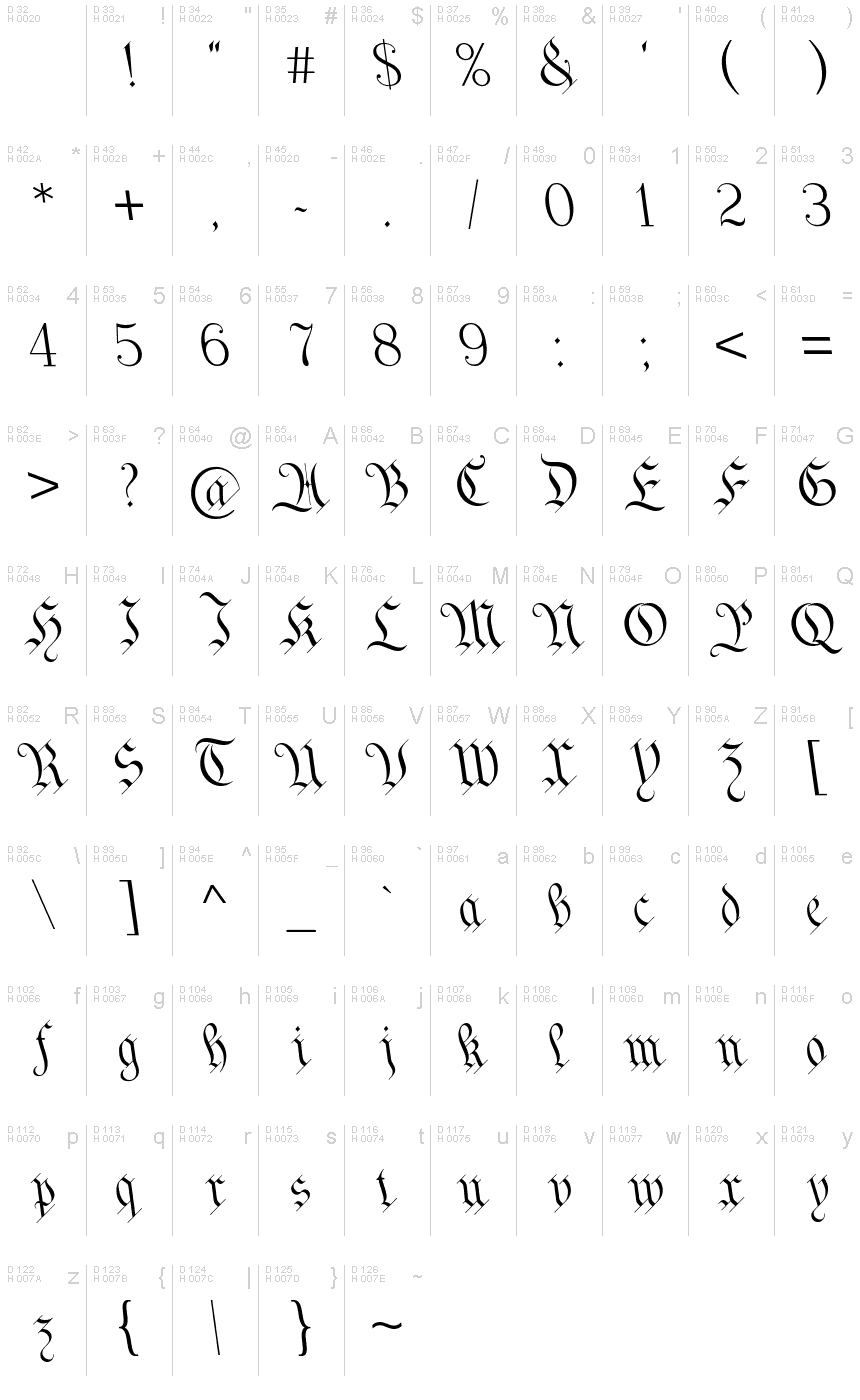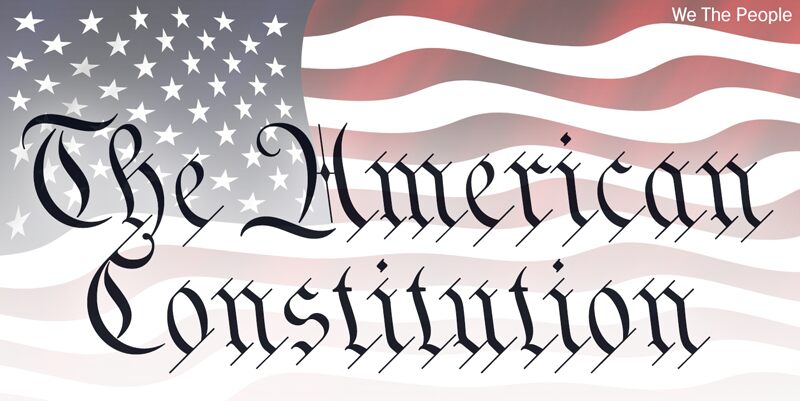We The People
TrueTypePersonal use
- Accents (partial)
- Accents (full)
- Euro
WeThePeople.ttf
Tags
Author's note
This typeface is extrapolated from the We the People calligraphy of the handwritten US Constitution Preamble which employed a style based on German Text and Square Text exemplars from George Bickhams penmanship copy-books, the most celebrated being 'The Universal Penman' published in 1743.
The original Constitution document was transcribed onto parchment by Jacob Shallus, a Pennsylvania Assistant Clerk, over a weekend in 1787. Shalluss biographer, Arthur Plotnik ('The Man Behind the Quill', 1987), notes that he was paid $30, a modest monthly wage at the time. He also suggests that the calligraphic headings, We the People and Article, may have been inserted by Shalluss 14 year old trainee son, Francis,
The manner in which the Article headings are squeezed into the space Shallus allowed for them suggests a second handand perhaps not a very experienced one.
The unconventional backslant of the headings would seem to support this contention, and at the end of the document there is perhaps a novices inconsistency in the structure of the letter n between that used for done and those used for In Witness. However, one has to admire the elegant swagger of the wavy t, h and l which the K-Type font extends to the b, f and k. Also, the simpler, Schwabacher-style W, an enlarged version of the lowercase w, is a little less flamboyant than the capital W from the German and Square texts in Bickhams manuals.
For designers using OpenType-aware applications, the typeface includes some Alternates, including a Bickham-style W, the letters t, h and n with added flourishes, two simpler forms of the A, and a few roman numerals for numbering articles. Also some ornamental flourishes and a round middle dot/decimal point. Punctuation marks are drawn in square, calligraphic style, but an alternative round period/full stop, for use with currency and numerals, is available at the period centered position (though placed on the baseline), accessed by Shift Option 9 on a Mac, or Alt 0183 on Windows. The full phrase, We the People, has been placed at the trademark keystroke and can be accessed by Shift Option 2 on a Mac, or Alt 0153 on Windows.
For designers who find the backslant awkward or unpleasant, the licensed typeface is available from k-type.com and includes two additional fonts which have a vertical aspect that may be more conducive to graphic design layouts. We The People Upright and We The People Upright Bold both retain the distinctive style, and the heavier weight is only slightly emboldened, just enough to add some punch.
The original, backslanted We The People font is free for personal use, and can be used freely by students and teachers at schools, colleges and universities, and by educational institutions themselves. The free font can also be used without licensing by public charities, museums, and libraries.
The original Constitution document was transcribed onto parchment by Jacob Shallus, a Pennsylvania Assistant Clerk, over a weekend in 1787. Shalluss biographer, Arthur Plotnik ('The Man Behind the Quill', 1987), notes that he was paid $30, a modest monthly wage at the time. He also suggests that the calligraphic headings, We the People and Article, may have been inserted by Shalluss 14 year old trainee son, Francis,
The manner in which the Article headings are squeezed into the space Shallus allowed for them suggests a second handand perhaps not a very experienced one.
The unconventional backslant of the headings would seem to support this contention, and at the end of the document there is perhaps a novices inconsistency in the structure of the letter n between that used for done and those used for In Witness. However, one has to admire the elegant swagger of the wavy t, h and l which the K-Type font extends to the b, f and k. Also, the simpler, Schwabacher-style W, an enlarged version of the lowercase w, is a little less flamboyant than the capital W from the German and Square texts in Bickhams manuals.
For designers using OpenType-aware applications, the typeface includes some Alternates, including a Bickham-style W, the letters t, h and n with added flourishes, two simpler forms of the A, and a few roman numerals for numbering articles. Also some ornamental flourishes and a round middle dot/decimal point. Punctuation marks are drawn in square, calligraphic style, but an alternative round period/full stop, for use with currency and numerals, is available at the period centered position (though placed on the baseline), accessed by Shift Option 9 on a Mac, or Alt 0183 on Windows. The full phrase, We the People, has been placed at the trademark keystroke and can be accessed by Shift Option 2 on a Mac, or Alt 0153 on Windows.
For designers who find the backslant awkward or unpleasant, the licensed typeface is available from k-type.com and includes two additional fonts which have a vertical aspect that may be more conducive to graphic design layouts. We The People Upright and We The People Upright Bold both retain the distinctive style, and the heavier weight is only slightly emboldened, just enough to add some punch.
The original, backslanted We The People font is free for personal use, and can be used freely by students and teachers at schools, colleges and universities, and by educational institutions themselves. The free font can also be used without licensing by public charities, museums, and libraries.
Character map
Please use the pulldown menu to view different character maps contained in this font.

Basic font information
Copyright notice
We The People by Keith Bates • © 2021 www.k-type.com • This font is extrapolated from the We the People calligraphy of the handwritten US Constitution Preamble.
Font family
We The People
Font subfamily
Regular
Unique subfamily identification
pyrs: We The People: 2021
Full font name
We The People
Name table version
We The People version 1.0 by Keith Bates • © 2021 www.k-type.com
Postscript font name
WeThePeople
Manufacturer name
Designer
Keith Bates
Description
The ‘We The People’ font is free for personal use. It can also be used unlicensed by students and teachers at schools, colleges and universities, by educational institutions themselves, and by public charities, museums, and libraries.
Extended font information
Platforms supported
PlatformEncoding
UnicodeUnicode 2.0 and onwards semantics, Unicode BMP only.
MacintoshRoman
MicrosoftUnicode BMP only
Font details
Created2021-01-20
Revision1
Glyph count404
Units per Em1000
Embedding rightsEmbedding for permanent installation
Family classScripts
WeightSemi-light
WidthMedium (normal)
Mac styleBold
DirectionOnly strongly left to right glyphs + contains neutrals
Pattern natureItalic
PitchNot monospaced
